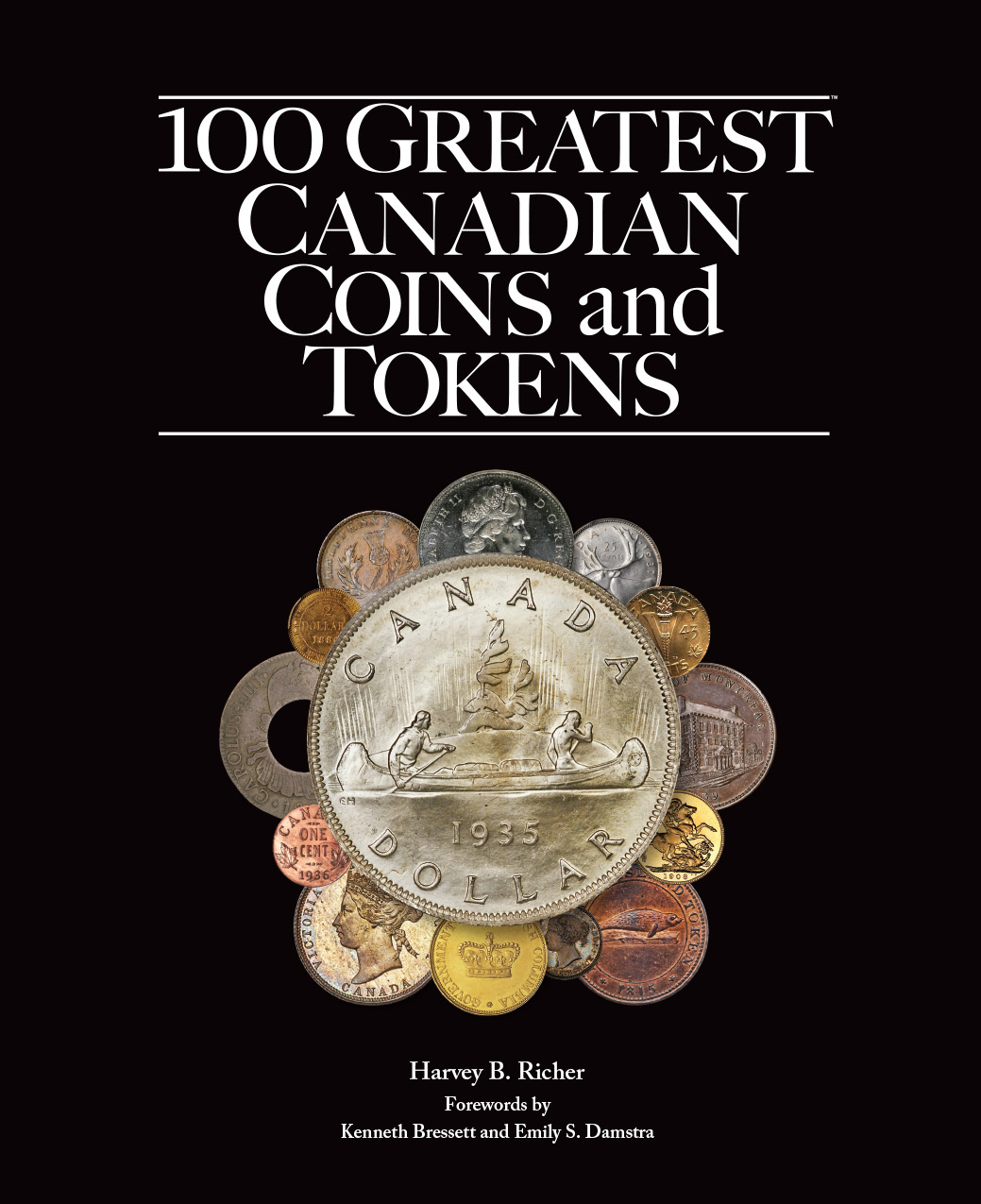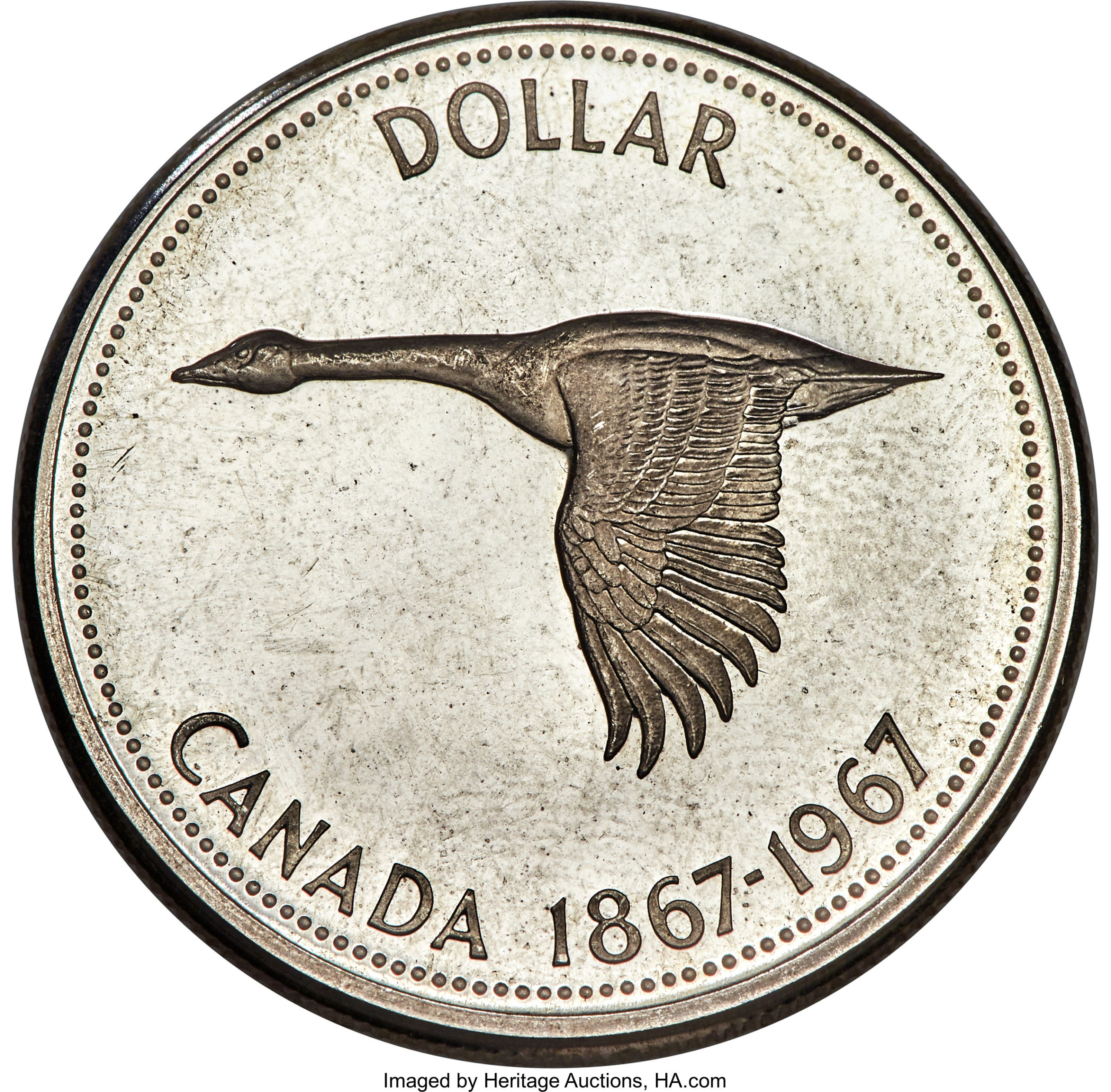A new book about Canadian coins by Canadian author Harvey Richer came out this year. I was honoured to have been invited to contribute a foreword to the book, which I’m sharing below.
The book, 100 Greatest Canadian Coins and Tokens, is available here and elsewhere from Whitman Publishing.

100 Greatest Canadian Coins and Tokens, by Dr. Harvey B. Richer, is available now.
Emily S. Damstra and the 100 Greatest Canadian Coins and Tokens
A new Whitman Publishing book, 100 Greatest Canadian Coins and Tokens, by Dr. Harvey B. Richer, debuted this summer at the annual convention of the Royal Canadian Numismatic Association in Ottawa, then at the American Numismatic Association World’s Fair of Money in Chicago. Now the 160-page hardcover coffee-table volume is available from bookstores and hobby shops and online. Here, Emily S. Damstra, a prolific designer of U.S. and Canadian coins, reviews the book and shares some thoughts on Canadian numismatics.
Damstra is a natural-science illustrator, nature artist, and coin and medal designer. Through her work, she explores many aspects of nature, science, and culture, from Paleozoic seas to modern life. Her illustrations appear in numerous publications, on interpretive signs in museums and natural areas, and occasionally in our pocket change. As of this writing, she’s created more than 40 designs for the Royal Canadian Mint and nearly two dozen coin and medal designs for the United States Mint. Outside of work, she is often found in the yard, engaged in a perpetual campaign to oust the invasive species from her native-plant garden.
A few years ago I had the opportunity to visit the Bank of Canada Museum in Ottawa. Several items piqued my interest, one of which was the gift shop’s $9.50 collection of wildlife coins from around the world. I’m pretty sure the package, boldly titled REAL COINS, was intended for a much younger audience, but I was curious and bought it on a whim. As a natural-science illustrator, I can’t help but notice and contemplate the ways that nature is depicted in popular culture, including on coins, and as a coin designer I like to consider how coin designs reflect the values of a nation. For those reasons, I wondered if this package of animal coins might give me some food for thought.
The “20 Genuine Mint Uncirculated” coins from 15 countries included a fairly impressive diversity of animals. The olm (aquatic salamander) on the 1992 10-stotinov coin from Slovenia might be my favorite in the set because of the way it seems to glide across an empty background field, and because this obscure cave-dwelling “baby dragon” is part of that nation’s identity for mythological rather than commercial reasons. The same can be said for some others in the set. These got me thinking about Canada’s current circulating coins and what it means that the beaver, caribou, loon, and polar bear are part of our numismatic heritage.
In 100 Greatest Canadian Coins and Tokens—a wonderful book—Dr. Harvey Richer deepened my knowledge about some of these beloved Canadian animal coins and broadened my knowledge about many other Canadian coins and tokens. In some of the early examples he discusses, we see nature depicted as a secondary element surrounding text (for example, the maple leaves and seeds on the Province of Canada 1858 pattern cent reverse) or chosen for its value as a resource (such as the seal and the filleted cod on the Magdalen Island 1815 penny token). Sometimes the subject depicted is from the settlers’ original homeland rather than native to what is now Canada (such as 1823 and 1832 Nova Scotia half-penny and penny thistle tokens).
It’s gratifying to see that in more recent coins—such as the iconic Newfoundland one-cent pitcher plant coin, Emanuel Hahn’s enduring caribou quarter, and Alex Colville’s brilliant 1967 commemorative series—Canada’s native species are depicted as primary devices and chosen for their own intrinsic and symbolic values. This shift suggests to me that the way we Canadians value nature and view it as part of our heritage has changed over time, and for the better. These coins are part of my own small collection and would take top billing if I were to create my own list of Canada’s 100 Greatest Coins and Tokens. We can’t help but compare our own favorites to Harvey Richer’s carefully conceived list.

A 1967 Confederation Centennial dollar featuring a Canada goose in flight. This image is courtesy of Heritage Auctions, which provided many of the stunning photographs in 100 Greatest Canadian Coins and Tokens.
Nature wasn’t the only thing that drew me through the pages of 100 Greatest Canadian Coins and Tokens; I also love any good story that’s well told. This book is full of them. I felt a little astonished when reading about some of the ingenious ways that people facilitated commerce in the absence or shortage of an official currency, as Richer so enthusiastically details. Bits of playing cards as currency? Check. Clandestinely minted tokens? Ah, those Nova Scotians! Coins made from the buttons on soldiers’ uniforms? That’s in there, too, and readers are left to speculate as to how those soldiers subsequently fastened their coats. A book is more fun if it raises as many questions as it answers.
There are also great stories about Canadian coins, such as how an unsatisfactory design contributed to Canada’s lack of a $2.50 gold coin, and why the nickels produced in 1942 had 12 sides. I was surprised to learn that events on the other side of the world affected the details of a Canadian coin’s design and its rarity (see chapter 8). Fortunately for us readers, Richer is not shy about peppering his tales with fascinating bits of background information. In his new book, we learn how long a cord of wood might last as the primary source of heating in the middle of the eighteenth century in New France (chapter 1), and where on this planet are the three largest meteoric impact craters (chapter 8).
As every coin collector understands, a great way to explore a nation’s history is through its numismatic legacy, and Harvey Richer’s thoughtfully guided tour of the 100 greatest Canadian coins and tokens is a marvelous journey.
3 Comments
Comments are closed.
HI Emily, what a wonderful honor! you wrote such a beautiful foreword! Congratulations and thank you for sharing, Martha
Emily,
Very well-written foreword. Inspires me to purchase the book. I ‘ve always been impressed with how wildlife dominate the designs on Canadian coins. That’s why you’ve done so many more designs for the Canadian Mint than the U,S. Mint. I have not been pleased with the latter’s recent marketing ploys. Numismatics should not treated like sports cards–lots of hype. Anyway, always enjoy getting your newsletters.
John Hunt
Thanks so much for your kind remarks, Martha and John!